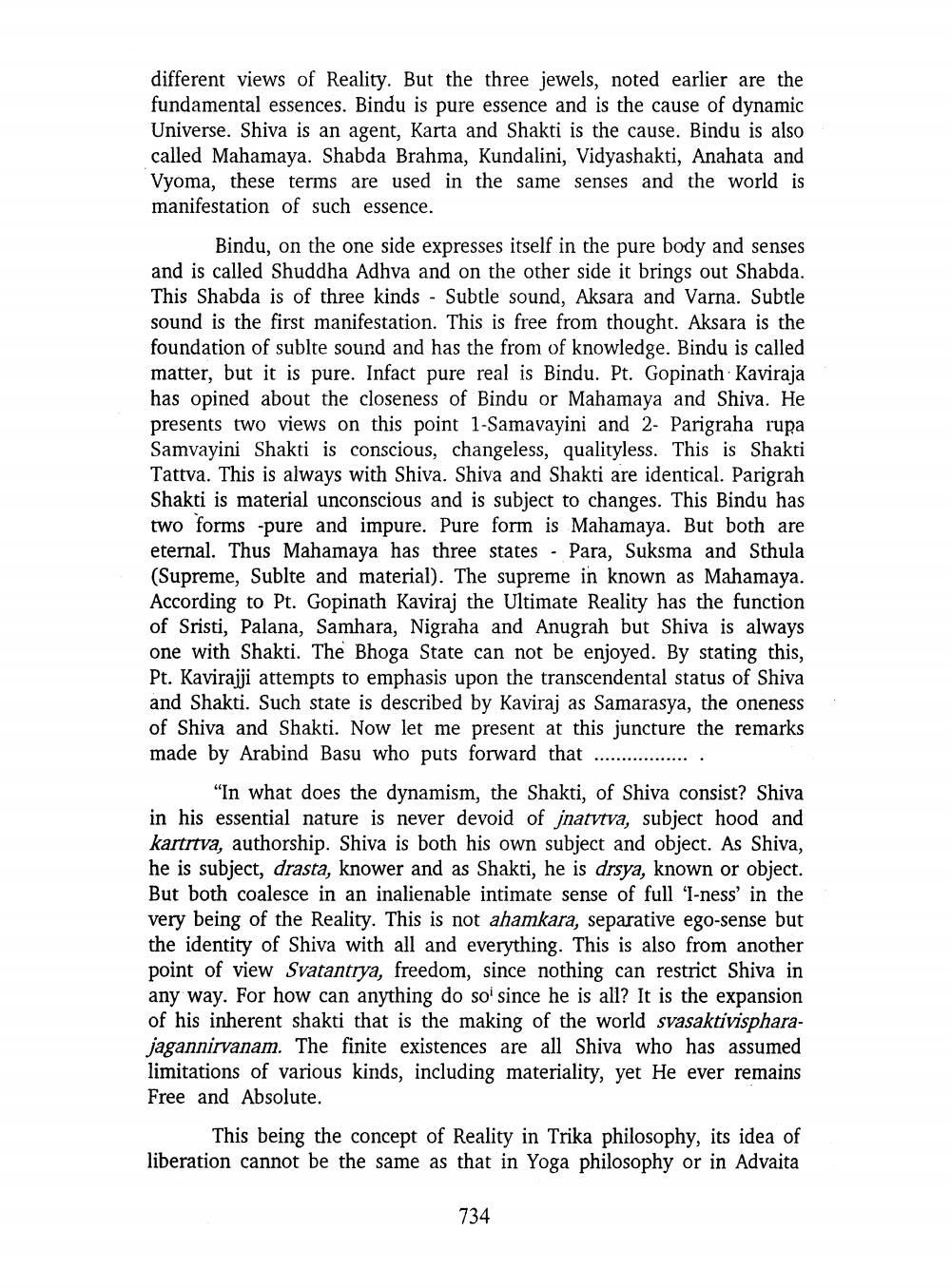________________
different views of Reality. But the three jewels, noted earlier are the fundamental essences. Bindu is pure essence and is the cause of dynamic Universe. Shiva is an agent, Karta and Shakti is the cause. Bindu is also called Mahamaya. Shabda Brahma, Kundalini, Vidyashakti, Anahata and Vyoma, these terms are used in the same senses and the world is manifestation of such essence.
Bindu, on the one side expresses itself in the pure body and senses and is called Shuddha Adhva and on the other side it brings out Shabda. This Shabda is of three kinds - Subtle sound, Aksara and Varna. Subtle sound is the first manifestation. This is free from thought. Aksara is the foundation of sublte sound and has the from of knowledge. Bindu is called matter, but it is pure. Infact pure real is Bindu. Pt. Gopinath Kaviraja has opined about the closeness of Bindu or Mahamaya and Shiva. He presents two views on this point 1-Samavayini and 2- Parigraha rupa Samvayini Shakti is conscious, changeless, qualityless. This is Shakti Tattva. This is always with Shiva. Shiva and Shakti are identical. Parigrah Shakti is material unconscious and is subject to changes. This Bindu has two forms -pure and impure. Pure form is Mahamaya. But both are eternal. Thus Mahamaya has three states - Para, Suksma and Sthula (Supreme, Sublte and material). The supreme in known as Mahamaya. According to Pt. Gopinath Kaviraj the Ultimate Reality has the function of Sristi, Palana, Samhara, Nigraha and Anugrah but Shiva is always one with Shakti. The Bhoga State can not be enjoyed. By stating this, Pt. Kavirajji attempts to emphasis upon the transcendental status of Shiva and Shakti. Such state is described by Kaviraj as Samarasya, the oneness of Shiva and Shakti. Now let me present at this juncture the remarks made by Arabind Basu who puts forward that ..
"In what does the dynamism, the Shakti, of Shiva consist? Shiva in his essential nature is never devoid of jnatvtva, subject hood and kartrtva, authorship. Shiva is both his own subject and object. As Shiva, he is subject, drasta, knower and as Shakti, he is drsya, known or object. But both coalesce in an inalienable intimate sense of full 'l-ness' in the very being of the Reality. This is not ahamkara, separative ego-sense but the identity of Shiva with all and everything. This is also from another point of view Svatantrya, freedom, since nothing can restrict Shiva in any way. For how can anything do sol since he is all? It is the expansion of his inherent shakti that is the making of the world svasaktivispharajagannirvanam. The finite existences are all Shiva who has assumed limitations of various kinds, including materiality, yet He ever remains Free and Absolute.
This being the concept of Reality in Trika philosophy, its idea of liberation cannot be the same as that in Yoga philosophy or in Advaita
734




